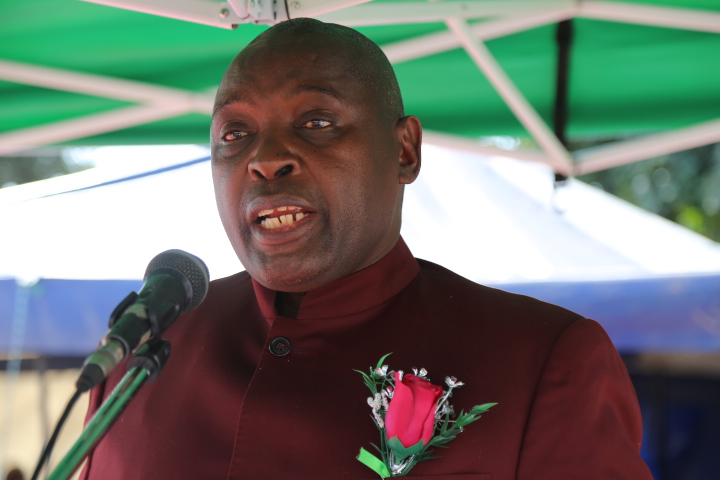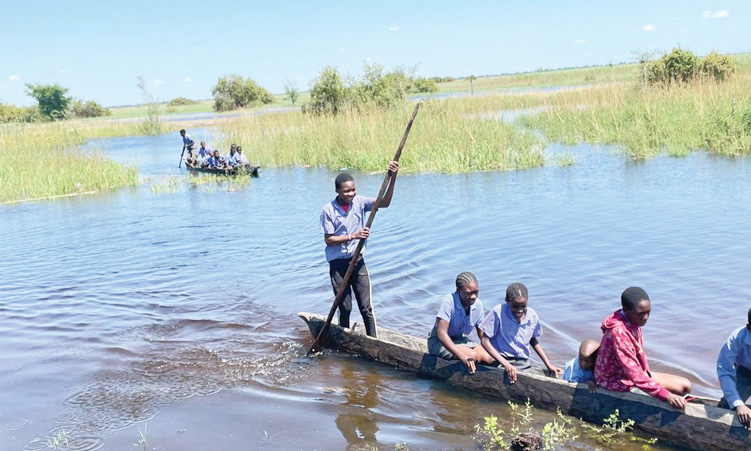An energy crunch that chokes fuel supplies, dims the lights at homes and workplaces, and ravages Western economies may no longer be the stuff of 1970s history books.
It could be a vision of the near future. The 1970s oil crisis gave Western countries a glimpse of what life is like when the energy supply isn’t enough to go around.Worried that an even bigger crisis lies in wait, the European Commission is presenting an energy “roadmap” tomorrow that aims to steer the bloc’s 490 million people in a different direction.The policies, of unprecedented scope, will carry a plain warning: High and volatile oil prices, surging demand, unreliable supplies and global warming compel Europe to reconfigure its energy supply before it’s too late.It is Europe’s response to one of the defining global problems of the 21st century.Within 20 years, at current rates of consumption, the EU could depend on foreign suppliers for 70 per cent of its energy, the Commission says.The EU’s blueprint, sketched out over the past year, plots a different path: lower energy consumption, the development of renewable sources and research into other alternatives, and ways of cutting carbon emissions from fuels already in use, particularly coal.The European Renewable Energy Council, a Brussels-based industry group, says all but two of the European Union’s 27 member states – Germany and Denmark – are shying away from binding targets for renewable energy production that are a central plank of the new policy.EU nations generate only 6 per cent of their energy from renewable sources and almost all of that is hydro-power from dams, according to the European Commission, which wants an agreed target of 15 per cent by 2015.Any political hesitation will hurt development of the alternative energy sector, EREC’s policy director Oliver Schaefer says.”Investors need a stable political framework,” he said.Private investment is vital if the new energy plan is to gain traction.State subsidies alone are unlikely to meet the challenge of developing alternative energy sources, analysts say, as voters balk at possible tax hikes.The equipment, installation and maintenance of “intermittent” renewable sources, such as solar or wind energy, are still significantly more expensive than traditional fuels.The bill for wind turbines, which on average turn between 20-30 per cent of the time, comes in at about US$1 300 per kilowatt of installed capacity.Gas turbines cost less than half that, according to the World Energy Council.The intermittent sources are also unreliable.A cloudy, windless day consigns solar panels and wind turbines to idleness – which is why at the moment they account for less than 1 per cent of Europe’s energy production.Expanding their use requires lower costs and a major engineering breakthrough in energy storage technology.Still, wind and solar power are creating a stock market buzz as investors stake cash on an anticipated major expansion.The US$450 million listing in November of French company EDF Energies Nouvelles, which has operations in nine European countries and the United States, on the Euronext stock exchange was heavily oversubscribed.Its shares leapt more than 16 per cent on their first day of trading and have remained steady.Michael Liebreich, CEO of London-based research firm New Energy Finance, says the investment market for clean energy companies gathered momentum this year after US President George W.Bush’s encouragement of new energy sources in his State of the Union speech.Britain’s publication of the Stern report on global warming, and the ratification by 165 countries of the Kyoto Protocol which calls for steep cuts in carbon dioxide emissions, provided another push.New Energy Finance predicts that US$70.9 billion will be spent worldwide this year on developing renewable energy.”There’s a realisation …that a transformation of the world’s energy architecture is going on,” Liebreich said.”Financial investors see this as a place to put money.”Germany, whose latest generation of five-megawatt wind turbines are more than 100 meters across, and Denmark already harvest around 20 per cent of their electricity from the wind.Other EU nations are expected to follow their lead.Germany is also in front in solar power.It has almost 1 million square meters of panels – about half the EU total.Austria, Greece, Spain and France also plan major solar investments.Portugal is developing the world’s first commercial wave power station off the country’s Atlantic coast.A solar power plant in the sunny south will be the world’s largest, with more than 52 000 solar panels covering 60 000 square metres..The goal is to enhance the country’s self-reliance – a kind of reverse globalization, turning to backyard energy sources.Nampa-APThe 1970s oil crisis gave Western countries a glimpse of what life is like when the energy supply isn’t enough to go around.Worried that an even bigger crisis lies in wait, the European Commission is presenting an energy “roadmap” tomorrow that aims to steer the bloc’s 490 million people in a different direction.The policies, of unprecedented scope, will carry a plain warning: High and volatile oil prices, surging demand, unreliable supplies and global warming compel Europe to reconfigure its energy supply before it’s too late.It is Europe’s response to one of the defining global problems of the 21st century.Within 20 years, at current rates of consumption, the EU could depend on foreign suppliers for 70 per cent of its energy, the Commission says.The EU’s blueprint, sketched out over the past year, plots a different path: lower energy consumption, the development of renewable sources and research into other alternatives, and ways of cutting carbon emissions from fuels already in use, particularly coal.The European Renewable Energy Council, a Brussels-based industry group, says all but two of the European Union’s 27 member states – Germany and Denmark – are shying away from binding targets for renewable energy production that are a central plank of the new policy.EU nations generate only 6 per cent of their energy from renewable sources and almost all of that is hydro-power from dams, according to the European Commission, which wants an agreed target of 15 per cent by 2015.Any political hesitation will hurt development of the alternative energy sector, EREC’s policy director Oliver Schaefer says.”Investors need a stable political framework,” he said.Private investment is vital if the new energy plan is to gain traction.State subsidies alone are unlikely to meet the challenge of developing alternative energy sources, analysts say, as voters balk at possible tax hikes.The equipment, installation and maintenance of “intermittent” renewable sources, such as solar or wind energy, are still significantly more expensive than traditional fuels.The bill for wind turbines, which on average turn between 20-30 per cent of the time, comes in at about US$1 300 per kilowatt of installed capacity.Gas turbines cost less than half that, according to the World Energy Council.The intermittent sources are also unreliable.A cloudy, windless day consigns solar panels and wind turbines to idleness – which is why at the moment they account for less than 1 per cent of Europe’s energy production.Expanding their use requires lower costs and a major engineering breakthrough in energy storage technology.Still, wind and solar power are creating a stock market buzz as investors stake cash on an anticipated major expansion.The US$450 million listing in November of French company EDF Energies Nouvelles, which has operations in nine European countries and the United States, on the Euronext stock exchange was heavily oversubscribed.Its shares leapt more than 16 per cent on their first day of trading and have remained steady.Michael Liebreich, CEO of London-based research firm New Energy Finance, says the investment market for clean energy companies gathered momentum this year after US President George W.Bush’s encouragement of new energy sources in his State of the Union speech.Britain’s publication of the Stern report on global warming, and the ratification by 165 countries of the Kyoto Protocol which calls for steep cuts in carbon dioxide emissions, provided another push.New Energy Finance predicts that US$70.9 billion will be spent worldwide this year on developing renewable energy.”There’s a realisation …that a transformation of the world’s energy architecture is going on,” Liebreich said.”Financial investors see this as a place to put money.”Germany, whose latest generation of five-megawatt wind turbines are more than 100 meters across, and Denmark already harvest around 20 per cent of their electricity from the wind.Other EU nations are expected to follow their lead.Germany is also in front in solar power.It has almost 1 million square meters of panels – about half the EU total.Austria, Greece, Spain and France also plan major solar investments.Portugal is developing the world’s first commercial wave power station off the country’s Atlantic coast.A solar power plant in the sunny south will be the world’s largest, with more than 52 000 solar panels covering 60 000 square metres..The goal is to enhance the country’s self-reliance – a kind of reverse globalization, turning to backyard energy sources.Nampa-AP
Stay informed with The Namibian – your source for credible journalism. Get in-depth reporting and opinions for
only N$85 a month. Invest in journalism, invest in democracy –
Subscribe Now!










